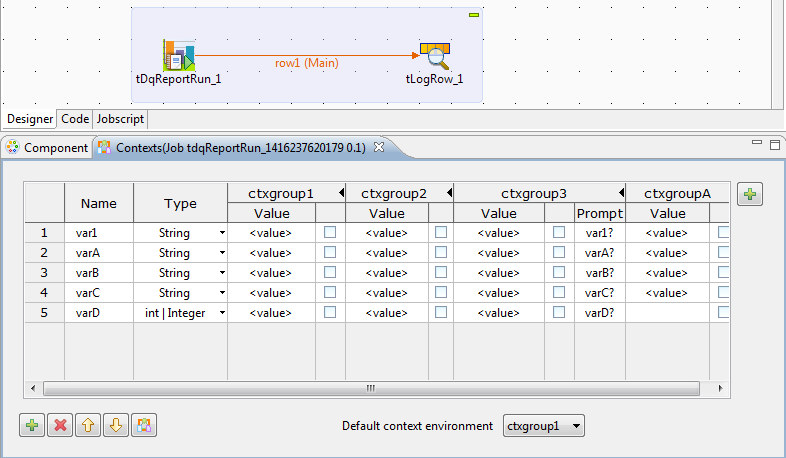Rules used by tDqReportRun to merge context groups and context variables
When you generate a Job with tDqReportRun on a report in the Profiling perspective, all context groups used in the data mart connection and analysis or report editors are merged together in a unified list in the Job Context view.
The Job Context view will provide you with a complete matrix about all context groups and context variables used in the connection, analyses and report. This merge follows specific rules that cover cases where the variables used in different context groups have the same name.
The tDqReportRun component uses the following rules to merge context groups and variables:
-
If two context groups have the same name, there will be one context group with the same name after the merge. The new context group will contain all context variables from the two context groups. If two context groups have different names, there will be two context groups after the merge, each context group will contain all context variables from the two context groups.
- If the two context variables have the same name, only the first context variable is kept after the merge (the value of the second variable is discarded). A warning message will list the duplicate context variable names. If the two context variables have different names, the two context variables are kept after the merge with their original values.
- Report editor: two context groups: ctxgroup1, var1 + ctxgroup2, var1
- Analysis editor: ctxgroup1, varA and varB + ctxgroup3, varA, varB
- Data mart connection: ctxgroupA, varC and varD

Did this page help you?
If you find any issues with this page or its content – a typo, a missing step, or a technical error – let us know how we can improve!
